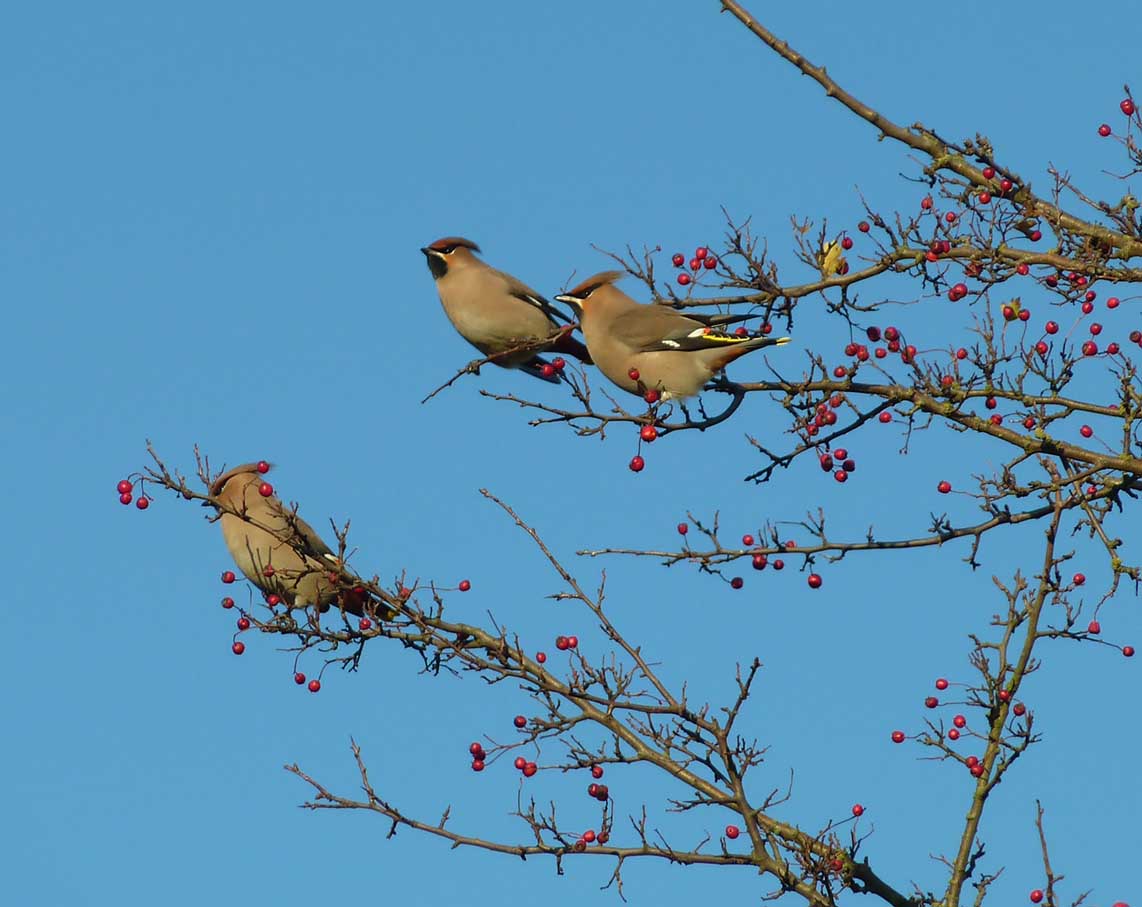
Waxwings
Waxwing
Latin name: Bombycilla garrulus
The Waxwing has a prominent crest, peachy-brown feathers with a black throat, a black mask around its eye, yellow and white in the wings, and a yellow tipped tail. Some of the wing feathers have red tips, that resemble wax drops, giving these birds their common name.
The Waxwing is about the same size as a Starling.
Waxwings do not breed in Britain, but are a winter visitor. Waxwings breeding grounds stretch from Scandinavia, through Russia and across to the Pacific coast. When the population on its breeding grounds gets too big for the food available, they go further afield looking for food. The birds are often seen in small flocks, of around 12 individuals.
The favoured food is the berries of Rowan, but they also eat hawthorn, cotoneaster and rose.
Many urban areas contain berry-producing bushes and shrubs. Supermarket car parks and industrial estates are a good place to see Waxwings as they are planted with shrubs favoured by the birds.
Waxwings prefer to feed within the bushes and shrubs. They have been observed plucking small berries from the shrubs, before flicking them up in the air and with a quick toss of the head, catching and swallowing them.
Waxwings can be seen from October to March.
Created: 8 September 2018 Edited: 17 September 2018
Mist, Mines and Ruins
Own label and private label building products
We produce, brand and supply for some of the biggest names in the industry. Read more...


